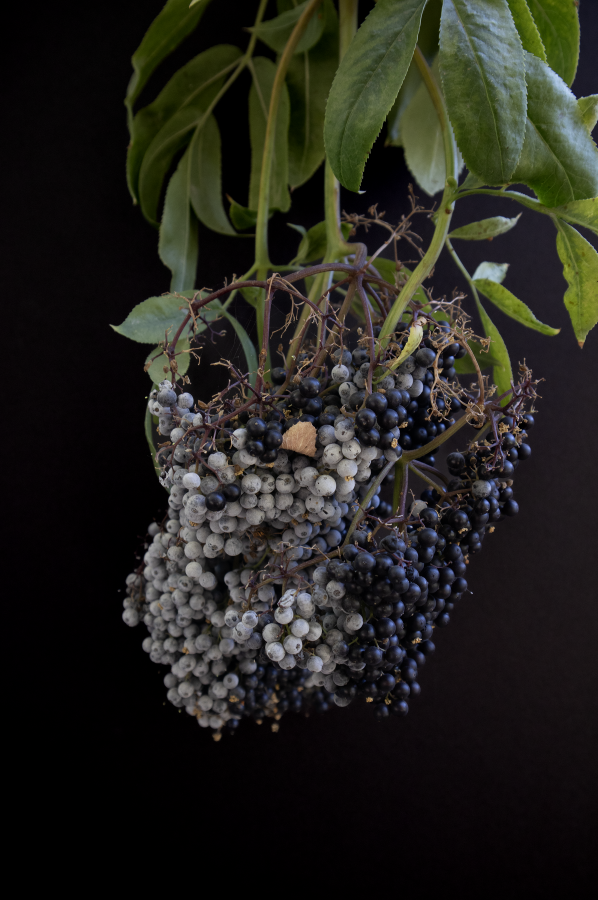“You are not just visitors to this land anymore—you are also stewards who carry responsibility for its safekeeping.”
– Meyo Marrufo, artist and participant in the [Placeholder: Swallowtail] class project
California State Parks, Capital District is pleased to announce the opening of a two-week long exhibit of student photography at the State Indian Museum. The exhibit, entitled [Placeholder: Swallowtail], emerges out of a novel collaboration with the Design Department at California State University, Sacramento. Thirty-five senior students in the Photography BFA program spent months researching and photographing the landscape of the State Indian Museum and Sutter’s Fort, two local State Historic Parks that share the same site in urban Sacramento. The resulting artwork will be on display concurrently at the State Indian Museum (2618 K Street, Sacramento, 95816) and Verge Center for the Arts (625 S Street, Sacramento, 95811) between November 22nd and December 8th, 2024.
Professors Eliza Gregory and Amy Elkins led the students in this innovative, site-specific project, encouraging them to make art in response to both experiential and archival research. This class is the latest iteration in Gregory’s [Placeholder] project, a multifaceted artwork that seeks to recognize the damaged relationship between people and the land they live on, and search for pathways toward repair. Elkins, who was brought on to co-teach the course this Fall, has been making photographic work about her family’s complex history in California in relationship to her cultural identity and the land for the past several years. Elkins shared her research and art practice methods with students in this class.
For this iteration of [Placeholder], the local State Parks offered students a rich opportunity to grapple with core class concepts; the State Indian Museum preserves the cultural past and present of Native Californians, and Sutter’s Fort interprets California’s fraught history of nineteenth-century European colonial settlement. Throughout the fall semester, students made repeated visits to the Parks as well as the off-site collections center where the Park archives are held, learning from State Parks staff about the histories of the sites as well as their present-day interpretation.
Photograph of students creating tule cordage under the guidance of Petee Ramirez, Senior Traditional Ecological Knowledge Specialist with the Shingle Springs Band of Miwok Indians. Photo by California State Parks.
Local artists and Traditional Ecological Knowledge practitioners introduced students to Native American perspectives on, and relationships with, the landscape in which these State Parks are enmeshed. Jacky Calanchini and Petee Ramirez, staff from the Shingle Springs Band of Miwok Indians, presented a land-based history of the region and taught students how to create tule cordage: tule is a water plant used to weave baskets and much more. Sound artist Amy Melissa Reed led students in an exercise where they wore headphones and used special microphones to listen to the pond, the trees, the plants and the walls of the Fort. Moreover, a group of artists who have been involved with the Native community and State Parks for many years contributed ongoing educational support: digital artist and curator Meyo Marrufo, Karuk Tribe cultural practitioner and traditional basket weaver Dixie Rogers, and flautist and author Al Striplen, met with students throughout the fall and provided crucial guidance on the developing art projects.
In response to these dynamic and varied experiences, students were asked to make artworks that reflect the complexity of the site and its history. They scanned plant cuttings from the site, identified native and non-native plant species in “yard portraits,” and made environmental portraits of people who move through the park, from strangers to State Parks employees. They produced zines for fourth graders, loving images of trees, and visualizations of the site as it has evolved over time. This work will be shown at both the State Indian Museum and Verge Center for the Arts from November 22nd through December 8th. Admission to the exhibit is free of charge and open to the public during normal operating hours at both locations. In addition, receptions to mark the exhibit opening and closing will be held at both sites on Friday, November 22nd and Saturday, December 7th from 5pm to 8pm. To enjoy the full breadth of work in the exhibit, the public is encouraged to visit both gallery spaces, which are in biking distance of each other.
Although the [Placeholder: Swallowtail] exhibit marks the culmination of the class, the project’s outcomes extend beyond the semester. The collaboration with State Parks offered students an invaluable opportunity to engage with timely, real-world issues, as well as a space to forge a new relationship to the land on which they live. Student Mark Henke explains, “Since the start of the semester, I feel like I see the land differently. It’s more than just space or scenery; it’s full of history, stories, and connections to people who have lived here long before us. Learning from Indigenous perspectives has shown me how much respect and responsibility we should have for the land.”
[Placeholder: Swallowtail] is supported by the Arts in California Parks initiative, a partnership between California State Parks, Parks California, the California Arts Council, by the donors of the Photography Special Projects Fund at Sacramento State, and by the California Indian Heritage Center Foundation.
The full digital exhibit can be viewed here: https://new.express.adobe.com/webpage/p4d3kj2TnR6Kc.
For more information about the [Placeholder: Swallowtail] exhibit please contact:
Eliza Gregory, Sacramento State University
Eliza.gregory@csus.edu
(415) 852-8355
Emma Silverman, California State Parks
Emma.silverman@parks.ca.gov
(279) 599-0999
Cheri Awalt, Verge Center for the Arts
cheri@vergecontemporary.org
(916) 448-2985





